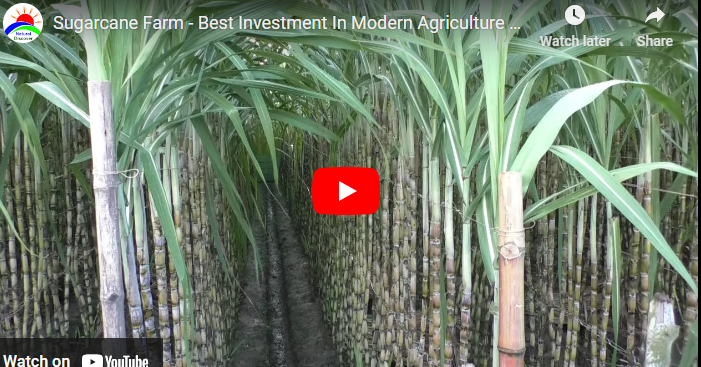Sugarcane farming is an essential agricultural practice that involves cultivating sugarcane plants for the production of sugar and other related products. As a sugarcane farmer, it is crucial to adopt the best agronomic practices to maximize yields, ensure plant health, and enhance overall productivity.
In this comprehensive guide, we will explore the 12 best agronomic practices on sugarcane plantation that every farmer should follow to achieve optimal results.
12 Best Agronomic Practices On Sugarcane Plantation [Sugarcane Farming Guide]
1. Selecting the Right Variety
Choosing the appropriate sugarcane variety is the first step towards successful cultivation. Consider factors such as yield potential, disease resistance, and adaptability to local climatic conditions. Some popular sugarcane varieties include Co 86032, Co 740, and Co 1148.
Read Also: 12 Best Agronomic Practices On Cassava Plantation
2. Soil Preparation
Proper soil preparation is vital for creating an ideal growing environment for sugarcane. Begin by removing weeds, rocks, and debris from the field. Deep plowing helps in loosening the soil, improving aeration, and facilitating root penetration. Add organic matter such as compost or well-rotted manure to enhance soil fertility.
3. Planting Method
Sugarcane can be planted using various methods, including whole stalk planting and sett planting. Whole stalk planting involves planting the entire stalk directly into the soil, while sett planting utilizes the bud or eye of the sugarcane stalk. Choose a planting method that suits your farming conditions and resources.
Read Also: 12 Best Agronomic Practices On Yam Plantation [Yam Farming Guide]
4. Proper Spacing
Maintaining the correct spacing between sugarcane plants is crucial for their growth and development. Adequate spacing ensures sufficient sunlight penetration and airflow, reducing the risk of diseases. Generally, a spacing of 60-90 cm between rows and 20-30 cm between plants is recommended.
5. Irrigation Techniques
Sugarcane requires an ample water supply throughout its growth cycle. Employ efficient irrigation techniques such as drip irrigation or furrow irrigation to provide the necessary moisture. Avoid overwatering, as it can lead to waterlogging and adversely affect plant health.
Read Also: 12 Best Agronomic Practices On Coconut Farm [Coconut Farming Guide]
6. Nutrient Management
Applying the right balance of nutrients is essential for promoting healthy growth and maximizing yields. Conduct soil tests to determine the nutrient content and pH levels of the soil. Based on the results, apply appropriate fertilizers at different growth stages of the sugarcane plants.
7. Weed Control
Weeds compete with sugarcane plants for nutrients, water, and sunlight. Implement effective weed control measures such as manual weeding, mulching, or using pre-emergence herbicides. Regular monitoring and timely intervention are crucial to keep weed growth in check.
8. Disease Management
Sugarcane is susceptible to various diseases, including smut, leaf scald, and mosaic virus. Implement preventive measures such as crop rotation, use of disease-free seed material, and regular field sanitation practices. Consult with local agricultural authorities for guidance on disease management specific to your region.
Read Also: 12 Best Agronomic Practices On Cocoa Plantation
9. Pest Control
Pests like sugarcane aphids, termites, and borers can cause significant damage to sugarcane crops. Integrated pest management strategies, including the use of biopesticides, insect traps, and cultural practices, help in minimizing pest populations effectively. Regular scouting and monitoring are essential to identify pest infestations early.
10. Harvesting Techniques
Timing the harvest correctly is crucial to ensure maximum sugar content in the sugarcane stalks. Harvest when the sugarcane is fully matured but before the onset of decay or lodging. Use sharp machetes or harvesters to cut the stalks close to the ground.
Read Also: 12 Best Agronomic Practices On Plantain Farm
11. Post-Harvest Handling
Proper post-harvest handling practices are necessary to maintain the quality of sugarcane and prevent sucrose losses. Clean the harvested sugarcane stalks, remove leaves, and transport them to the processing facility promptly. Minimize delays between harvesting and processing to avoid sugar deterioration.
12. Crop Rotation
Implementing crop rotation practices is vital for sustainable sugarcane farming. Rotating sugarcane with leguminous crops or cereals helps break disease cycles, improves soil fertility, and reduces pest populations. Plan a crop rotation schedule that suits your specific farming conditions.
Read Also: 12 Best Agronomic Practices For Oil Palm Farm [Oil Palm Success Guide]
Can sugarcane be grown in all climates?
Sugarcane cultivation is possible in a wide range of climates. However, it thrives best in tropical and subtropical regions with temperatures between 20°C and 35°C.
How long does it take for sugarcane to mature?
On average, sugarcane takes around 10 to 18 months to reach maturity, depending on the variety and growing conditions.
What are the common pests that affect sugarcane?
Some common pests that affect sugarcane include sugarcane aphids, termites, borers, and white grubs.
How often should sugarcane be irrigated?
Sugarcane generally requires irrigation every 7 to 10 days, depending on the prevailing weather conditions and soil moisture levels.
What is the ideal pH range for sugarcane cultivation?
Sugarcane thrives in a slightly acidic to neutral soil pH range of 5.5 to 7.5.
Is organic farming suitable for sugarcane cultivation?
Organic farming practices can be applied to sugarcane cultivation, promoting sustainability and reducing the environmental impact of conventional farming methods.
Conclusion
By implementing the 12 best agronomic practices on sugarcane plantation discussed in this guide, farmers can ensure a successful sugarcane farming venture. Selecting the right variety, preparing the soil adequately, and adopting appropriate irrigation, nutrient management, and pest control techniques are key to achieving optimal yields and maintaining plant health. Regular monitoring, timely intervention, and continuous learning are essential for sustainable sugarcane farming.
Remember, the best practices may vary based on local conditions and specific farming requirements. Stay updated with the latest research and seek guidance from agricultural experts to enhance your sugarcane farming knowledge and skills.




